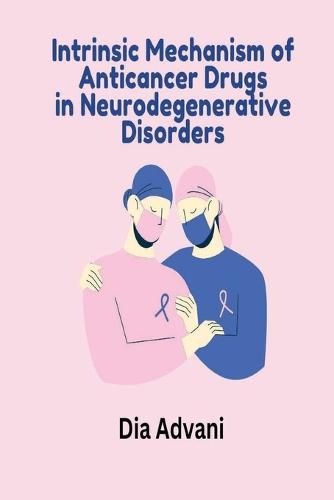Readings Newsletter
Become a Readings Member to make your shopping experience even easier.
Sign in or sign up for free!
You’re not far away from qualifying for FREE standard shipping within Australia
You’ve qualified for FREE standard shipping within Australia
The cart is loading…






This title is printed to order. This book may have been self-published. If so, we cannot guarantee the quality of the content. In the main most books will have gone through the editing process however some may not. We therefore suggest that you be aware of this before ordering this book. If in doubt check either the author or publisher’s details as we are unable to accept any returns unless they are faulty. Please contact us if you have any questions.
Neurodegenerative (NDDs) disorders are one of the most alarming medical illnesses
affecting the brain and nervous system. The Lack of understanding of the disease-leading
mechanisms makes the treatment options unavailable. Currently, an estimated 35.6 million
people are surviving with Dementia, and the number is presumed to triple by the next 30
years [1]. According to the report of the World Health Organization (WHO), in the next 20
years, NDDs affecting motor functions will be the second most widespread reason for
human death [2]. NDDs are categorized based on clinical features- dementia, parkinsonism,
or motor neuron disease, or based on the anatomic areas covered- spinocerebellar
degeneration, frontotemporal degeneration and extrapyramidal disorders. In general,
synucleinopathies, and TDP-43 proteinopathies are the most
widespread NDDs. Abnormal protein aggregation is the major hallmark feature of all
NDDs associated with some fundamental processes such as progressive neuronal loss,
neuroinflammation, dysfunction of the Ubiquitin proteasome system (UPS), abnormal
autophagic processes, oxidative insult, and neuronal apoptosis
(HD), and Multiple sclerosis (MS) are the major NDDs affecting the global health.
Aging is the biggest risk factor for various diseases, from cancer to NDDs. These agerelated
diseases can be categorized into two groups. Loss-of-function diseases like NDDs
are represented by the loss of cells, tissues, or optimal physiological functions. While gainof-
function diseases like cancer exhibit gain of cells and, sometimes, new cellular functions
$9.00 standard shipping within Australia
FREE standard shipping within Australia for orders over $100.00
Express & International shipping calculated at checkout
This title is printed to order. This book may have been self-published. If so, we cannot guarantee the quality of the content. In the main most books will have gone through the editing process however some may not. We therefore suggest that you be aware of this before ordering this book. If in doubt check either the author or publisher’s details as we are unable to accept any returns unless they are faulty. Please contact us if you have any questions.
Neurodegenerative (NDDs) disorders are one of the most alarming medical illnesses
affecting the brain and nervous system. The Lack of understanding of the disease-leading
mechanisms makes the treatment options unavailable. Currently, an estimated 35.6 million
people are surviving with Dementia, and the number is presumed to triple by the next 30
years [1]. According to the report of the World Health Organization (WHO), in the next 20
years, NDDs affecting motor functions will be the second most widespread reason for
human death [2]. NDDs are categorized based on clinical features- dementia, parkinsonism,
or motor neuron disease, or based on the anatomic areas covered- spinocerebellar
degeneration, frontotemporal degeneration and extrapyramidal disorders. In general,
synucleinopathies, and TDP-43 proteinopathies are the most
widespread NDDs. Abnormal protein aggregation is the major hallmark feature of all
NDDs associated with some fundamental processes such as progressive neuronal loss,
neuroinflammation, dysfunction of the Ubiquitin proteasome system (UPS), abnormal
autophagic processes, oxidative insult, and neuronal apoptosis
(HD), and Multiple sclerosis (MS) are the major NDDs affecting the global health.
Aging is the biggest risk factor for various diseases, from cancer to NDDs. These agerelated
diseases can be categorized into two groups. Loss-of-function diseases like NDDs
are represented by the loss of cells, tissues, or optimal physiological functions. While gainof-
function diseases like cancer exhibit gain of cells and, sometimes, new cellular functions